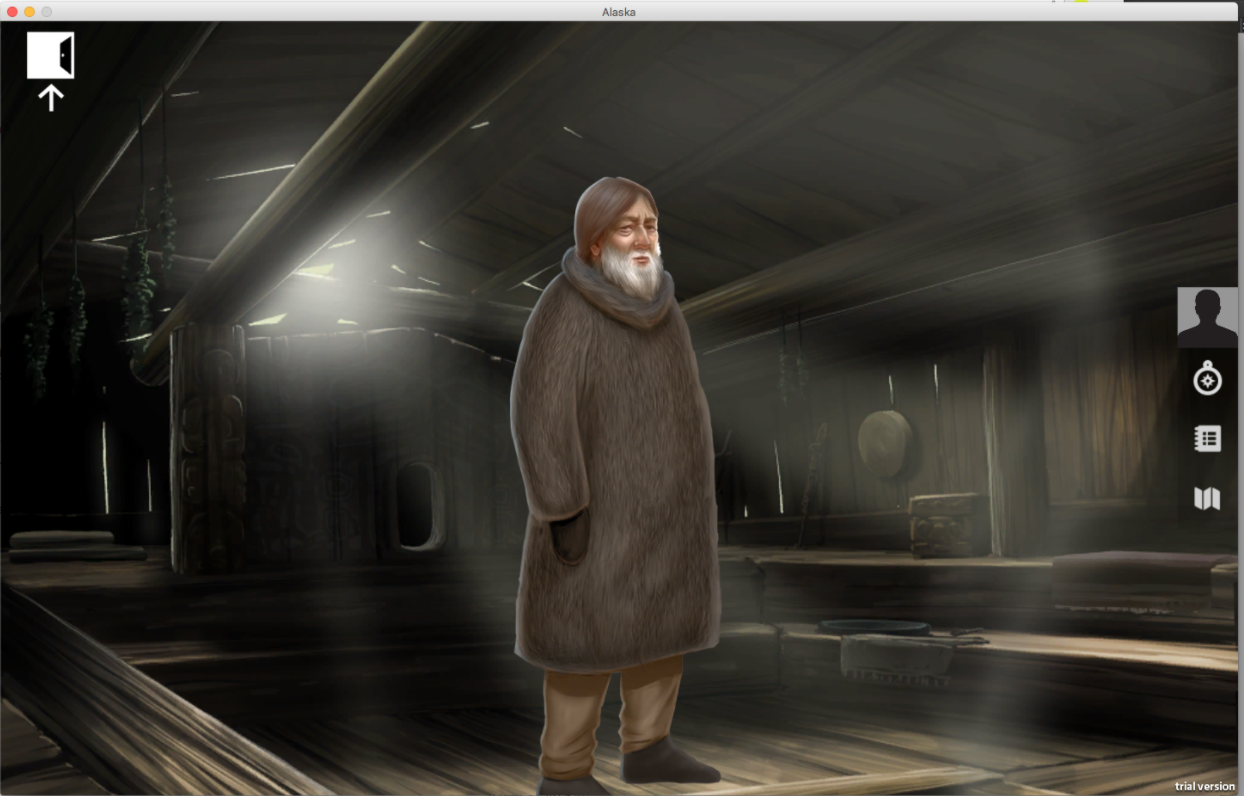ALASKA LEARNING NETWORK
Alaska – A Journey in Time
MY INPUT
Travel & Research • Spec Script • Learning Objectives • Game Logic • User Experience • Rapid Prototyping • Product Iteration
I had a great time working on Alaska: A Journey in Time. This game teaches high school students about the historical relevance of Alaskan history and the importance of Alaska’s native heritage. In the game, our protagonist finds themselves travelling through time and space; meeting with a series of historically significant individuals. Each new encounter unlocks more adventures that in turn trigger new learning opportunities.
TRAVEL & RESEARCH
This project called for me to make the long journey to Anchorage, Alaska. I met and listened to subject matter experts, educators, government officials, and community leaders upon arrival. The experience brought invaluable context to my research, hearing stories first hand, holding artifacts, entering huts and forts and exploring nature. I was only there a few days, but I came back feeling inspired. Upon arriving home, I immediately got to writing the first draft of the game.
IDEATION & SPEC SCRIPT
I drafted the basic plot of the game over the next week. The game starts deep within an Alaskan forest where a glowing meteorite has just landed. You play a hiker who has stumbled upon this rock. As you approach the crash site, you hear voices experiencing what can only be hallucinations of ravens, spirits and swirling lights. In a flash, you are whisked away through time and space.
This script wasn’t just an exercise in fantasy writing. The narrative needed to hit all the required learning objectives at specific moments in the story. Although these constraints were challenging, I very much enjoyed the extra level of structure that I had to work within. The client signed off on the story premise almost immediately. A game content writer was then brought in to flesh out each chapter.


GAMEPLAY & DIALOGUE
Next came the logic of the game. This effort involved theory, process and structure and as such, I was immediately drawn to the task. I didn’t have a lot of experience in this field, but I certainly learned a lot. I knew that if I did my job well, the developers and artists could concentrate on what they did best. I added character triggers within the actual dialogue scripts so that developers could follow the logic in context to each character model. I then created dialogue trees that outlined the conditional relationship between questions and responses and how specific actions would unlock new scenes and characters.

RAPID PROTOTYPING
I often use the software Axure RP to do static wireframes, quick site maps, and user flows. I will also use this software to facilitate prototyping tasks to quickly test out a strategy or express a concept to a client requiring some interactivity. I love using Axure RP because it lets me work within a comprehensive fidelity level depending on the job.







